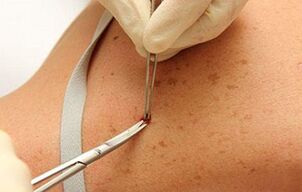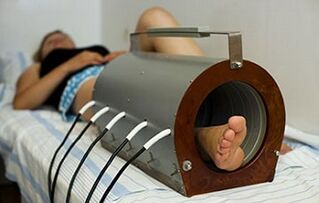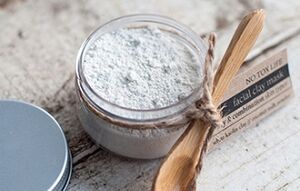Psoriasis is a chronic skin disease. It manifests in the form of a rash. The initial symptoms are similar to the clinical symptoms of other epidermal pathologies. In order to prevent the development of the disease and promote its course, it is necessary to distinguish the pathology. For this, you need to understand the symptoms and manifestations of psoriasis in different stages.
Reasons for adults and children
Why psoriasis occurs in children and adults, medical scientists have yet to find out precisely. There is only speculation about the cause of the development of this disease. Therefore, there is a hypothesis that psoriasis can be inherited: Psoriasis rash is often observed in people whose parents have this skin disease. Some doctors associate pathological development with immunological instability, metabolic disorders, and chronic infections. In most patients, doctors will notice severe hyperlipidemia.
To check the sensitivity to this disease, you need to perform a classic genomic analysis. Those with ten chromosomal loci are more susceptible to psoriasis. The main genome responsible for innateness is PSORS1.
Psoriasis can develop at any age: in children, young men and women, and the elderly. According to medical scientists, in adults, the following factors can trigger the disease:
- Low immunity;
- Chronic fatigue;
- alcoholism;
- Serious stress;
- Poor hygiene;
- Constantly overeating;
- insect bites;
- Infectious pathology (influenza, ARVI);
- Vaccination;
- Temperature difference;
- Vitamin deficiency;
- Smoking;
- Long-term medication;
- burning;
- Allergies;
- Hormonal imbalance;
- Climate change;
- Improper nutrition.
Children most often face psoriasis outbreaks:
- After sore throat;
- Whether there is chronic infection in the body;
- has low immunity.
Psoriasis should not start:People with this diagnosis increase the risk of early atherosclerotic vascular disease and heart disease. There is also the threat of arthritis.
Psoriasis is most common in people with poor genetics.
How does psoriasis manifest

Psoriasis is characterized by large patches on the skin. These spots are initially insignificant and appear on the rougher skin of the body parts (elbows, knees). Such formations peeled off. Sores will appear when scratching and will turn pale in the morning.
The disease is characterized by the following manifestations:
- Stearin dyeing.These are small scaly papules fused in plaques.
- Terminal film.Under the psoriasis plaque, there is a thin, bright pink skin. After removing all the scales, her doctor can see it.
- precise bleeding(blood-show syndrome). If the stratum corneum of the epidermis is scraped and the terminal membrane is damaged, blood drops will appear.
Such manifestations are collectively called the triad of psoriasis. They were detected in samples with inflamed skin.
Psoriasis also has the following symptoms:
- The formation of new papules in the case of skin damage and increased lesion area; The
- element of the rash has a dense structure;
- There is a red edge around the patch;
- Weaknesses;
- There is a whitish three-millimeter pseudo-atrophic margin around the rash;
- The skin has a purulent smell (when pustules are formed);
- Oily phenomenon, yellowish brown spots appear under the nail plate;
- Proliferative acanthosis, in which the skin is thickened and the inter-nipple processes are elongated;
- Symptoms of thimble (nail psoriasis);
- ab sores.
Since psoriasis is a chronic pathology, its symptoms begin to disappear after a period of time, and the wounds heal. But then the pimples formed again.
Initial symptoms of disease onset
In the first stage of psoriasis, a rash is always formed.
First, it is almost invisible and has no characteristic proportions. Several rash spots appeared on the limbs.

A few weeks later, the number of affected areas increased. The rash merges into large patches, covered with silver scales. The initial itching of psoriasis is moderate. The person complained of chronic fatigue and weakness.
This symptom is also characteristic of allergic skin reactions, dermatitis and shingles. Therefore, differential diagnosis is very important.
During the examination, the doctor discovered the psoriasis triad. Based on the size of the rash, the doctor can determine the cause of psoriasis: drops, dots, or coins.
Signs of stage of disease progression
As the disease progresses, the number of pimples increases and the rash spreads to healthy areas of the body. Minor scratches, bumps, or burns can cause a nodular rash. The second stage takes a long time. On palpation, you will find dense borders between the inflamed areas of the epidermis. The edges of the patches are brightly colored and covered by scales.
In the final stage of the disease, the symptoms begin to disappear gradually. The patch becomes shallower and its border disappears. After a period of time, the pimples disappeared, the skin was dry, and the pigmentation spots remained in place.
The temperature of psoriasis only rises when there is an inflammatory process (acne purulent). Then, the affected area may be injured.
What is the stearin phenomenon
Stearic plaque is the main symptom that forms the triad of psoriasis. This is a small area with papule elements that are severely flaky. The more times the doctor scratches the skin on the affected area, the more peeling will occur. During the operation, the person will not feel pain. The phenomenon gets its name because the detachable skin scales look like stearic spots.
First place: the location of the rash
First, outbreaks of psoriasis form on the elbows, feet and knees. Then the pimples spread to areas of the body with thinner and more delicate skin: calves, lower back, wrists, abdomen, groin area, scalp. The rash can be located elsewhere. But these areas of the body are most commonly affected by psoriasis.
Without proper treatment, the disease can spread to nails, mucous membranes and joints.
The location of adult psoriasis rash can be:
- head. A rash was found on the scalp, ears, back of the head, eyebrows, eyelids, eyes, nasolabial fold area.
- Lower limbs.
- The elbow. The scaly plaques become rough over time.
- The upper limbs. A small rash similar to urticaria appears.
In children, the rash usually appears in:
- legs;
- buttocks;
- Skin folds;
- elbow;
- Scalp.
How to start scalp scaly
Scaly moss can spread all over the body. Usually acute. A rash can form from beads to peas. The papules are covered with silver and white scales. The rash increases over time and merges into focal spots with uneven edges. The patch has a clear border. When psoriasis affects the scalp, a psoriasis coronal structure forms: red pustules appear as purulent components, appearing behind the ears and on the forehead line.
The speed of pathological development
The rate of development of psoriasis depends on its form. Therefore, the water droplet pathology type is characterized by its ability to appear and disappear suddenly. Severe plaque psoriasis is characterized by the gradual spread of pustules throughout the body. Then the rash was covered with scales within a short time. The rash merges into large patches.
Diagnostic method

If you suspect psoriasis, see a dermatologist. The doctor makes a presumptive diagnosis based on the patient's complaints and examination. The doctor will be referred for laboratory and instrumental research. Differential diagnosis can also be made.
If the disease progresses, it is recommended to donate blood for analysis to identify acute, autoimmune or rheumatic processes. In severe cases, a biopsy is also required to show the accumulation of Rete's body, thickening of layers, skin infiltration of polyblastic cells, T lymphocytes, dendritic cells, and increased angiogenesis under the psoriatic plaque.
For differential diagnosis, please execute:
- Allergy test;
- Serum biochemical test;
- Analysis of feces on malnutrition;
- Histological examination of biopsy.
No special tests are required to diagnose psoriasis in children. The pathology is detected based on the examination of the elements of the rash.
How to treat psoriasis
Since psoriasis is considered a chronic disease, it cannot be completely cured. The goal of treatment is to achieve stable relief and eliminate complications. For this, please use medicine, physical therapy and folk remedies. In severe cases, the patient will be hospitalized. In the initial stage, treatment is allowed at home.
Clinic Therapy
To treat psoriasis, doctors prescribe antihistamines to relieve swelling, itching and redness.

Enzymatic agents are also used. They stimulate the body to produce necessary enzymes. Damage to the skin of the body can cause discomfort and tightness.
The realization that the disease cannot be cured leads to psychological problems. Therefore, the doctor prescribed sedatives to help restore the emotional state.
Hepatoprotective agents are used to improve liver function. Non-steroidal anti-inflammatory drugs can relieve inflammation and itching. To strengthen the body, immunomodulators are needed.
also uses physical therapy techniques. They help remove pigmentation and speed up healing. The doctor recommends:
- selective herbal medicine;
- Laser action on the skin;
- Ultrasound therapy;
- Magnetic therapy.
In the hospital, patients are under the constant supervision of doctors. Therefore, it is easy to track the effectiveness of the prescribed treatment plan in order to adjust the applied treatment method in time.
Home Care
After discharge from the hospital, continue treatment. In order to maintain normal health and achieve stable relief, the doctor will prescribe some medications during the course of treatment. Use vitamin complexes, ointments, folk remedies.
Patients are advised to treat the skin areas affected by psoriasis with hormonal and non-hormonal ointments daily.
In order to improve the condition of the epidermis, the dermatologist prescribed vitamins. Vitamins A, E, D and C are particularly useful in fighting psoriasis. They can enhance the body's defenses and help restore and clean the skin.

Traditional therapists recommend using activated charcoal. One of the main reasons for the development of psoriasis is abnormal metabolism and poisoning. Activated carbon acts as an absorbent, so it can clean harmful substances in the body well. It should be taken at a dose of 1 tablet per kilogram of body weight per month, twice a day.
White clay helps to restore the skin. It reduces inflammation, dryness and eliminates itching. Bath lotions with sea salt are also useful.
When treating psoriasis at home, some rules are recommended:
- Take the medicine at the dosage indicated by your doctor.
- Treat the skin with ointments and creams.
- After softening the case, remove it carefully.
- Air and sunbathing.
- Avoid stressful situations.
- Follow your daily diet.
- Enough rest.
- Take a break while taking the medicine.
Following these suggestions, one can avoid the recurrence of the disease.
Therefore, psoriasis is a serious chronic disease. The reason for its development has not been determined exactly, only the factors that have attracted people's attention are known. The disease has characteristic symptoms, but in the first stage it is similar to other skin pathologies. In order to detect and start treatment of the disease in time, you need to contact a dermatologist when a suspicious rash appears.























